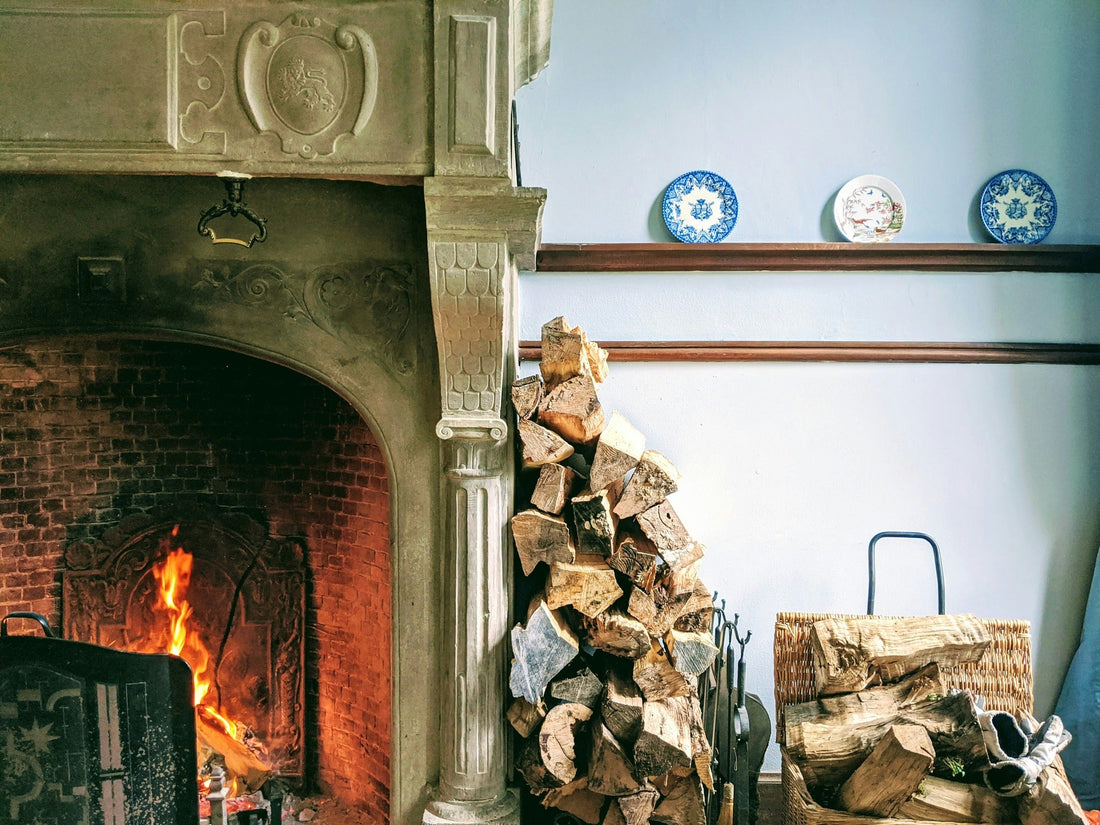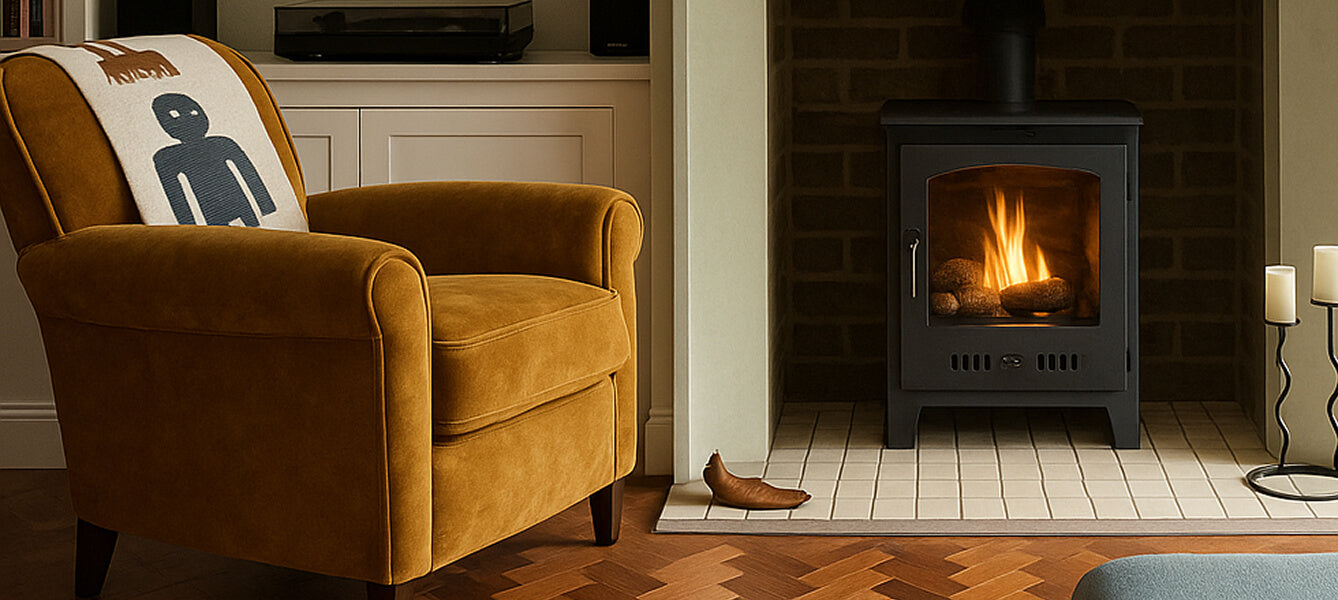
From the earliest open hearths found in ancient dwellings (think the cosy Hobbit-holes in Lord of the Rings) to the sleek, eco‑friendly designs of today, fireplaces have been on such a journey. Join us as we look back on the evolution of fireplaces and step into the fascinating world of bioethanol fireplace history.
Looking back on historical heating methods
Fire has been at the heart of human comfort for centuries. In prehistoric times and throughout the early Bronze Age, simple stone and brick open hearths were used for cooking and warmth. However, these fireplaces were extremely inefficient and produced a lot of smoke and soot. Enclosed fireplaces that burned wood, coal, and oil emerged in the 12th century, which gave homeowners more control over the heat output.
By the late medieval period, the addition of chimneys allowed smoke to escape a room more efficiently, which made indoor life much more pleasant. And by the Victorian era, cast-iron fireplaces had become ornate focal points in living rooms, representing a significant shift towards fireplaces that were just as beautiful as they were practical.
Fireplace evolutions through the decades
Fireplaces have evolved dramatically throughout the centuries. The 20th century saw rapid changes in fireplaces styles and fuel sources, such as:
-
1950s: Homeowners in the 50s prioritised practicality above anything else. Brick-mantled fireplaces were popular during this time, thanks to their affordability and homely appearance.
-
1960s: Modernist designs began to take hold, with many households installing freestanding steel fireplaces in bright colours and futuristic shapes. Gas fireplaces also evolved to incorporate minimal frames made from chrome and glass.
-
1970s: The 70s was the era of natural stone fireplaces and large inglenooks. Wood-burning stoves began to gain popularity again, with many homeowners seeing them as a charming and cost-effective choice.
-
1980s: Enter the decade of indulgence, with elaborate marble fireplace surrounds and glossy finishes. Electric fires also became more sophisticated, with improved flame effects to set the tone.
-
1990s: Minimalist aesthetics and convenience dominated during the 90s, with sealed gas fires and ribbon-effect electrics appealing to many busy homeowners.
-
2000s: As we transitioned into the noughties, environmental awareness began to take hold. Eco-materials and open-plan living were big during this time, and the arrival of bioethanol fireplaces marked a major advance in heating technology.
-
2010s: Technology began to get smarter, bringing about advances like app-controlled flames and adjustable heat settings. People started to make purchasing decisions based on environmental factors, with bioethanol fireplaces gaining some serious momentum.
Enter bioethanol fireplaces
Bioethanol fireplaces emerged in the early 20th century as a greener alternative to coal fires and log burners. Here’s why so many homeowners are now investing in our bioethanol fires:
-
Eco-friendly: Bioethanol is a renewable fuel made from crops like sugarcane and grain. It burns clean, producing only heat, water vapour, and a small amount of CO₂ (equivalent to lighting a couple of tealight candles).
-
Vent-free: Our bioethanol fireplaces feature no chimney and no flue, so there’s no smoke and no soot to contend with. They’re exceptionally easy to install, making them suitable for homes and flats that are unable to house traditional fires.
-
Easy to use: Our fireplaces still feature real flames, without the hassle and fuss that comes with traditional log burners. Simply squeeze the biofuel into the fuel box, light it, and enjoy the cosy glow of the flames.
-
Design versatility: From sleek wall-mounted panels to traditional woodburner-style stoves, we offer a huge range of bioethanol fireplaces to suit all interior design styles. We also offer outdoor models that are perfect for your garden or patio area.
-
Safety first: Our bioethanol fireplaces are built to BS EN 16647:2015 and feature a patented no-spill fuel box, which eliminates the risk of fuel spillages for improved safety.
-
Low-odour experience: Most of our customers detect little-to-no scent when using our bioethanol fireplaces. However, we also offer fragranced fuels in vanilla, forest, and festive scents if you want to add a gentle, pleasant odour to your fireplace.
Bioethanol fireplaces are here to stay
It’s clear to see that bioethanol fireplaces aren’t just a passing trend; they’re here to stay. At imaginfires, we’re on a mission to bring real flames back into people’s lives and make bioethanol fireplaces more accessible to all.
We offer a great selection of bioethanol fireplaces to suit your home and lifestyle, along with a fantastic range of premium, low-odour bioethanol fuels to give you a clean and convenient burn every time. Explore our collection and get ready to bring the comfort, beauty, and eco-friendly benefits of bioethanol into your home.
